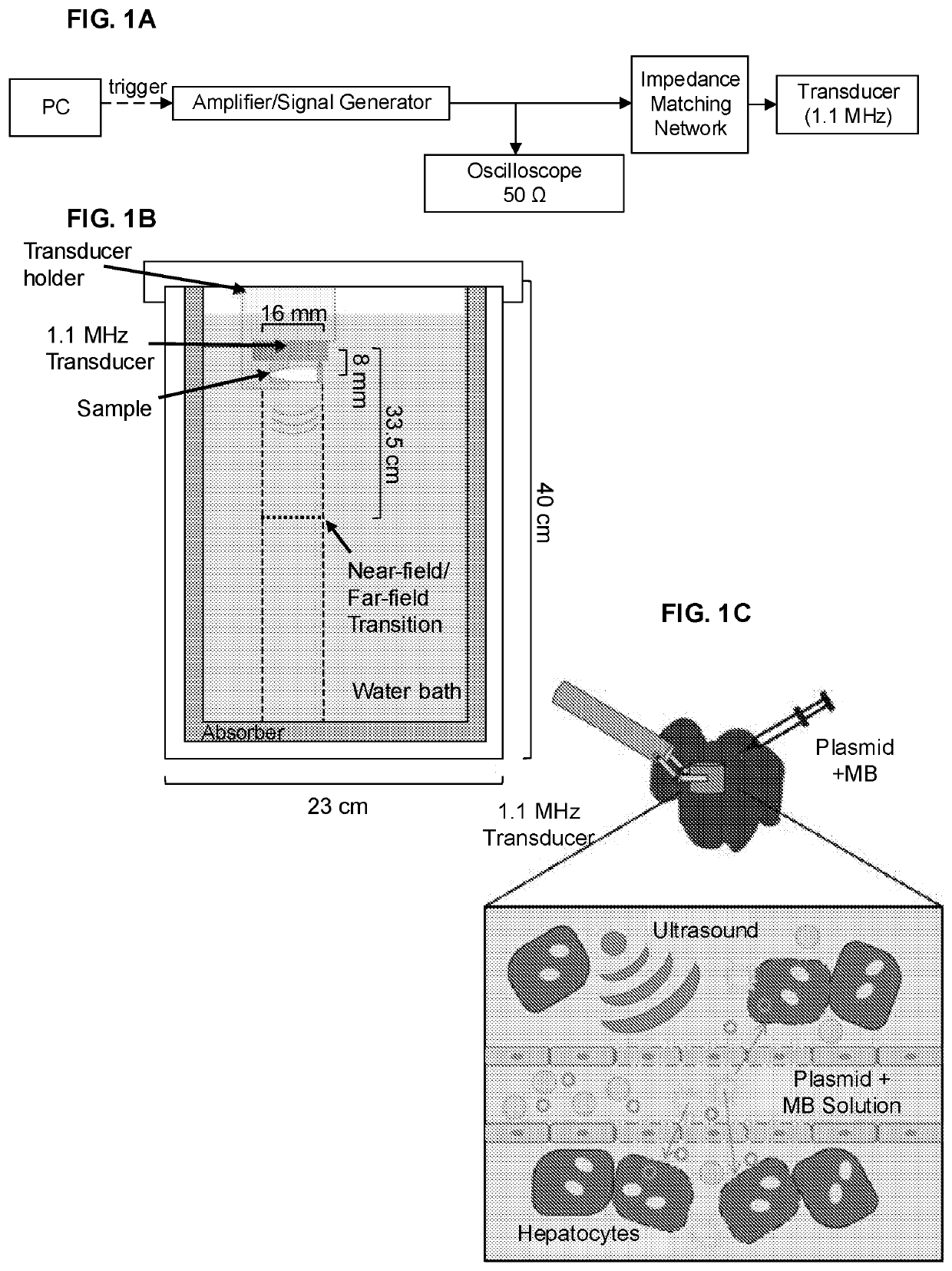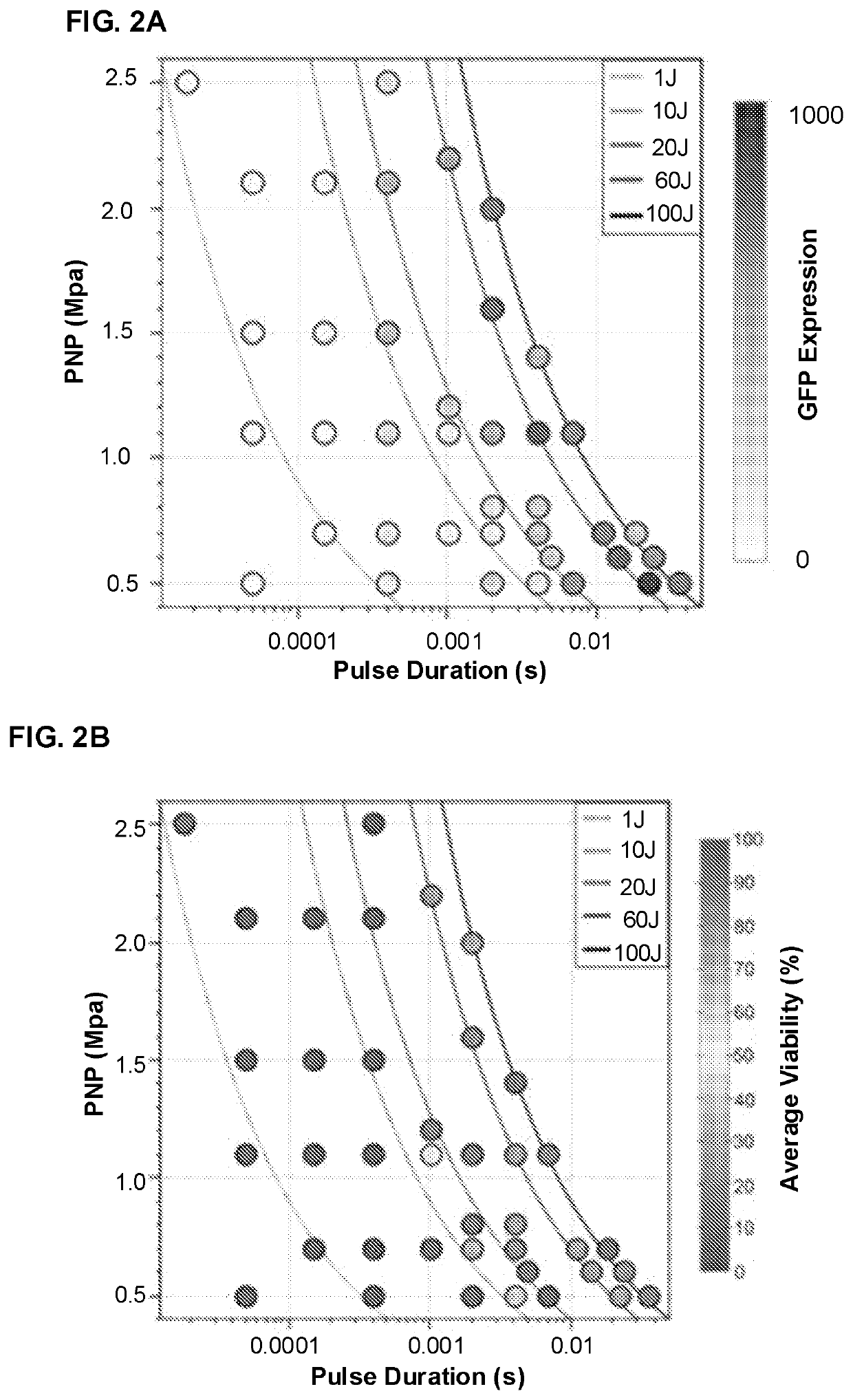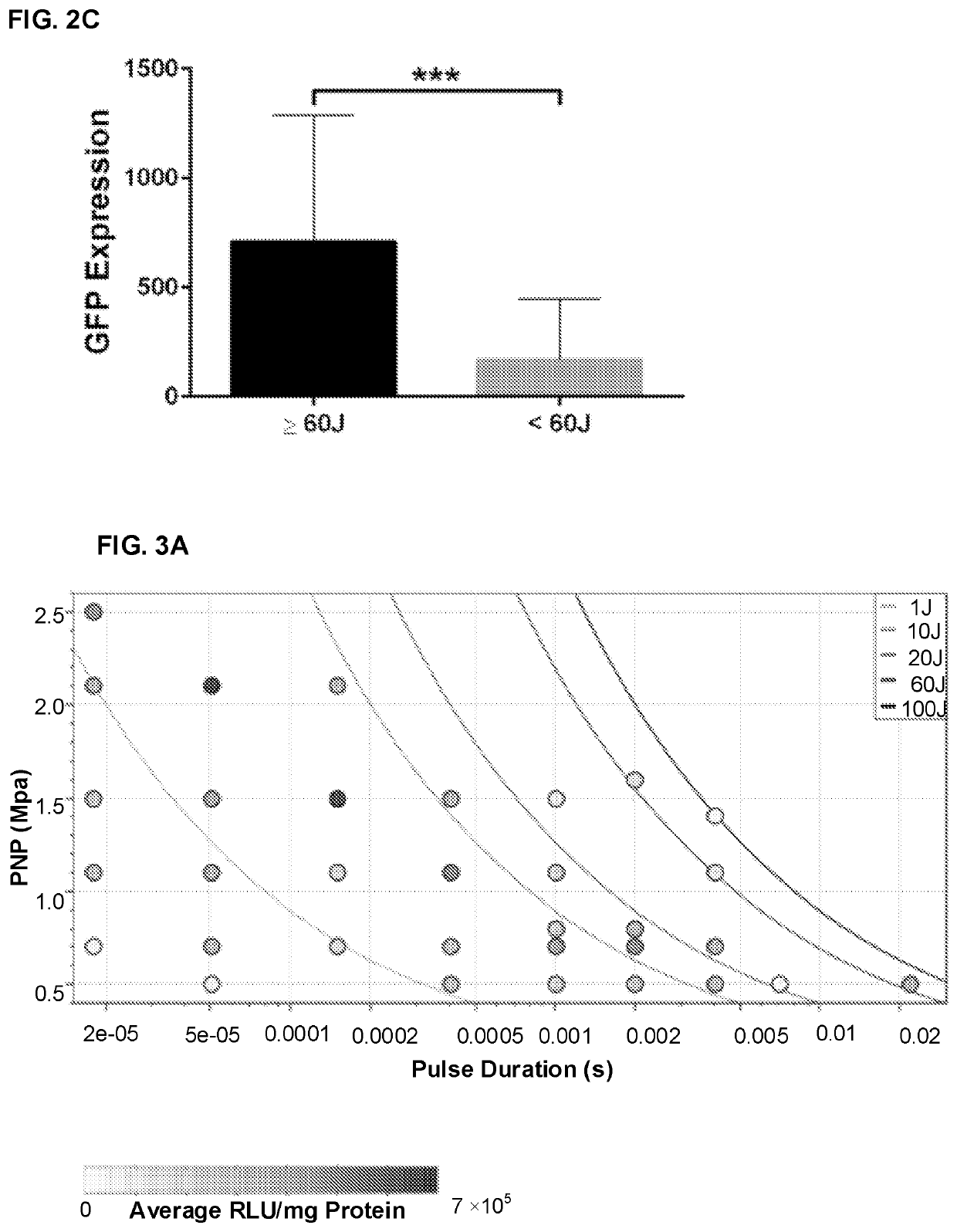Ultrasound-mediated gene and drug delivery
a gene and gene technology, applied in the field of ultrasonic/sonic/infrasonic diagnostics, therapy, genetic material ingredients, etc., can solve the problems of direct injection to tissue-specific sites, the challenge of traversing the plasma membrane of target cells, and the challenge of systemic administration of genetic vectors, so as to reduce associated cell damage, increase transgene expression, and increase the effect of gene transfer efficiency
- Summary
- Abstract
- Description
- Claims
- Application Information
AI Technical Summary
Benefits of technology
Problems solved by technology
Method used
Image
Examples
example 1
g Pulse Duration in Ultrasound-Mediated Gene Delivery Lowers the Acoustic Pressure Threshold for Efficient Gene Transfer to Cells and Small Animals
[0115]This Example describes development of clinically applicable procedures involving transcutaneous ultrasound-mediated gene deliver (UMGD). At least some of the material described in this example was published in Tran et al., J Controlled Release 279:345-354, 2018.
[0116]Introduction. Non-viral gene therapy confers appreciable benefits over viral methods including lower risk of immunopathogenicity, greater flexibility in vector construction, and better spatial and temporal control. Delivery of plasmid DNA (pDNA) is particularly attractive as manipulation of the host genome can be avoided and the vector can more easily be engineered for episomal persistence and long-term promoter activation. Ultrasound (US)-mediated gene delivery (UMGD) has long been recognized as a potential method to perform minimally invasive, non-viral gene transfer ...
example 2
Invasive Procedure for Ultrasound-Mediated Non-Viral Gene Delivery to Liver in a Porcine Model
[0160]In this example, changes in beam patterns such as focused, unfocused, or cylindrically focused beams in transducer designs are evaluated. Other changes including number and configuration of elements, or driving center frequency are also considered, as are various US parameter settings and treatment energy, which appear to play a role in UMGD bioeffects.
[0161]Significant gene transfer enhancement was realized using targeted, ultrasound (US)-mediated gene delivery (UMGD) of non-viral vectors in large animal models via an open surgery procedure; see Example 1. The goal to develop a minimally invasive treatment protocol that involves therapeutic US (tUS) across the skin for ease of clinical translation was handicapped because gene transfer efficiency was significantly reduced with transcutaneous UMGD due to US power attenuation across multiple tissue layers. Therefore, different US transd...
example 3
neous Ultrasound-Mediated Nonviral Gene Delivery to the Liver in a Porcine Model
[0178]Ultrasound (US)-mediated gene delivery (UMGD) of non-viral vectors was demonstrated in this study to be an effective method to transfer genes into the livers of large animals via a minimally invasive approach. A transhepatic venous non-viral gene delivery protocol was developed in combination with transcutaneous, therapeutic US (tUS) to facilitate significant gene transfer in pig livers. A balloon catheter was inserted into the pig hepatic veins of the target liver lobes via jugular vein access under fluoroscopic guidance. tUS exposure was continuously applied to the lobe with simultaneous infusion of pGL4 plasmid (encoding a luciferase reporter gene) and microbubbles. tUS was delivered via an unfocused, 2-element disc transducer (H105), or a novel, focused single-element transducer (H114). Supplying transcutaneous US using H114 and H105 with longer pulses and reduced acoustic pressures resulted in...
PUM
| Property | Measurement | Unit |
|---|---|---|
| energy | aaaaa | aaaaa |
| energy | aaaaa | aaaaa |
| frequency | aaaaa | aaaaa |
Abstract
Description
Claims
Application Information
 Login to View More
Login to View More - R&D
- Intellectual Property
- Life Sciences
- Materials
- Tech Scout
- Unparalleled Data Quality
- Higher Quality Content
- 60% Fewer Hallucinations
Browse by: Latest US Patents, China's latest patents, Technical Efficacy Thesaurus, Application Domain, Technology Topic, Popular Technical Reports.
© 2025 PatSnap. All rights reserved.Legal|Privacy policy|Modern Slavery Act Transparency Statement|Sitemap|About US| Contact US: help@patsnap.com



